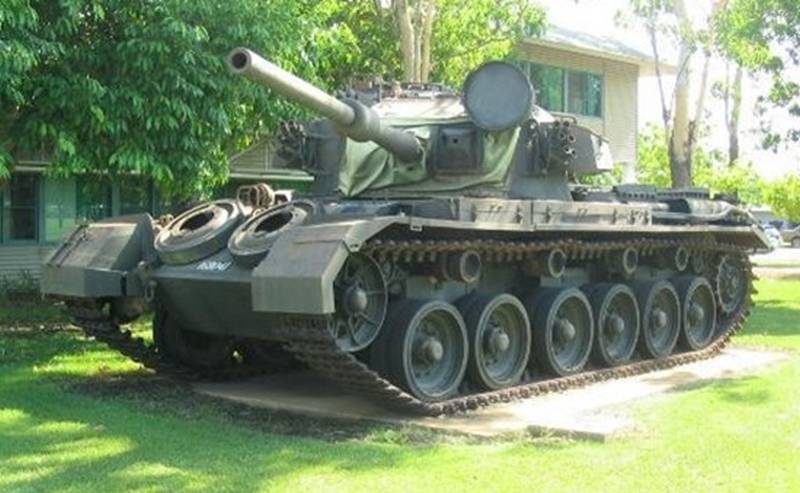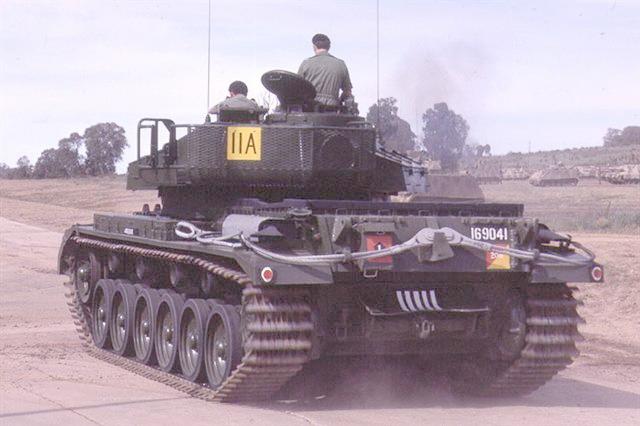The story of Australian Army Centurion Mk.3 169041 starts in December 1951 when it was manufactured at the Royal Ordnance Factory, Barnbow, UK. It was assigned the British registration 06 BA 16, the tank was supplied to the Australian Commonwealth Government and arrived in Australia in late May 1952.
In July, 1953, the tank was relocated to Woomera, in South Australia, where it was intended to be used in a secret test, code named Operation Totem. That was one of British atomic tests carried out in remote areas of Australia.

Even though Australian army had plenty of obsolescent Second World War tanks available they provided only a year old Centurion 169041, to measure the blast effects. Military officials were aware that the damage would be so severe as to effectively destroy the tank. That fact shows how important this test was to measure effect of the nuclear blast on military equipment.
Centurion Mk.3 169041 was placed about 1.500 feet (460 meters) in front of a 9 kiloton nuclear blast. Tank was left with the engine running and a full ammunition load and mannequin crew inside. The tank was facing toward the bomb with every expectation it would be destroyed.
Examination after detonation found that it had been pushed away from the blast point by about 5 feet (1.5 m), pushed slightly left. The engine had stopped because it had ran out of fuel. Antennae were missing, lights and periscopes were heavily sandblasted, the cloth mantlet cover was incinerated, and the armored side plates had been blown off and carried up to 200 yards (180 m) from the tank. Remarkably, though, it could still be driven from the site. Were the tank manned, the crew would most likely have been killed by the shock wave.
The tank was inspected and then towed back to base. The crew inspecting it did not have any hazmat suits and most of the crew members died of cancer, as did the many people who did work on it before it was completely decontaminated, repaired and put back on duty.
By September 1956 a new engine had been installed and 169041, without turret and was used as tow tug. It remained in this role until it was sent for base overhaul in 1958. Before it was reintroduced on duty Centurion 169041 was upgraded into the Mk.5. Overhaul was completed in 1960 and 169041 was placed in storage where it stayed until 1962 when it was re-introduced into active service.
In early 1968, Centurion 169041, subsequently nicknamed The Atomic Tank, was sent to Vietnam war.
In May 1969, during a firefight, 169041 was hit by a rocket-propelled grenade (RPG) at the turret ring. The turret crew were all wounded by shrapnel. Thankfully, both crew and tank survived. One crew member was evacuated, while the others remained on duty and the tank remained battleworthy. It left Vietnam in April 1970.
 DIY Metallic Nano Puzzle Centurion Tank Model
DIY Metallic Nano Puzzle Centurion Tank ModelAfter it was returned from Vietnam, Centurion 169041 went to Bandiana for its third overhaul and modernization, which was completed in late 1970. It spent a few years in storage, and it was again issued to 1st Armoured Regiment.

Centurion 169041 was preserved and sent into long term storage during the first half of 1977. The tank was recovered back to 1st Armoured Regiment several years later. Restored to reliable running condition, it was used to carry the retiring Chief of the General Staff, Lieutenant General H J Coates, during his farewell parade in April 1992.
The Atomic Tank is now located at Robertson Barracks in Palmerston, Northern Territory. Although other tanks were subjected to nuclear tests, 169041 is the only one known to have withstood a blast and to go on for another 23 years of service, including 15 months on operational deployment in a war zone.